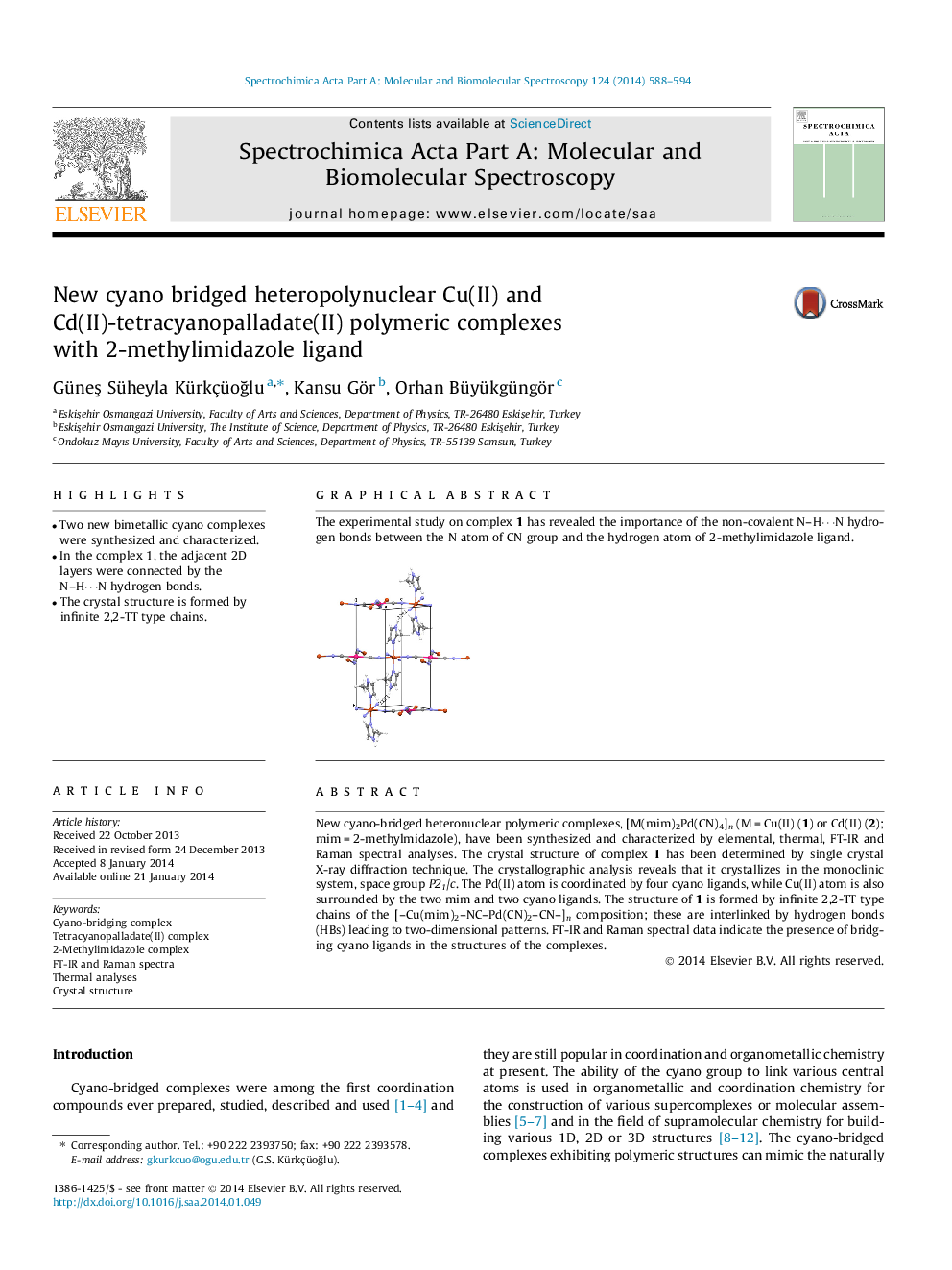| کد مقاله | کد نشریه | سال انتشار | مقاله انگلیسی | نسخه تمام متن |
|---|---|---|---|---|
| 1234328 | 1495244 | 2014 | 7 صفحه PDF | دانلود رایگان |

• Two new bimetallic cyano complexes were synthesized and characterized.
• In the complex 1, the adjacent 2D layers were connected by the N–H⋯N hydrogen bonds.
• The crystal structure is formed by infinite 2,2-TT type chains.
New cyano-bridged heteronuclear polymeric complexes, [M(mim)2Pd(CN)4]n (M = Cu(II) (1) or Cd(II) (2); mim = 2-methylmidazole), have been synthesized and characterized by elemental, thermal, FT-IR and Raman spectral analyses. The crystal structure of complex 1 has been determined by single crystal X-ray diffraction technique. The crystallographic analysis reveals that it crystallizes in the monoclinic system, space group P21/c. The Pd(II) atom is coordinated by four cyano ligands, while Cu(II) atom is also surrounded by the two mim and two cyano ligands. The structure of 1 is formed by infinite 2,2-TT type chains of the [–Cu(mim)2–NC–Pd(CN)2–CN–]n composition; these are interlinked by hydrogen bonds (HBs) leading to two-dimensional patterns. FT-IR and Raman spectral data indicate the presence of bridging cyano ligands in the structures of the complexes.
The experimental study on complex 1 has revealed the importance of the non-covalent N–H⋯N hydrogen bonds between the N atom of CN group and the hydrogen atom of 2-methylimidazole ligand.Figure optionsDownload as PowerPoint slide
Journal: Spectrochimica Acta Part A: Molecular and Biomolecular Spectroscopy - Volume 124, 24 April 2014, Pages 588–594